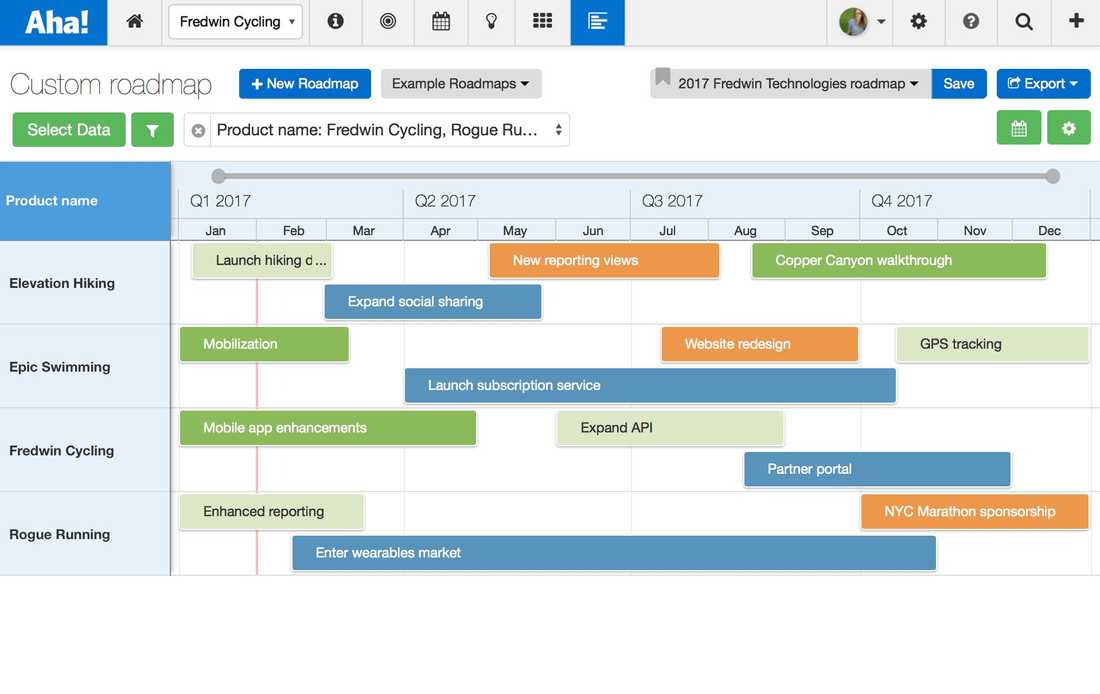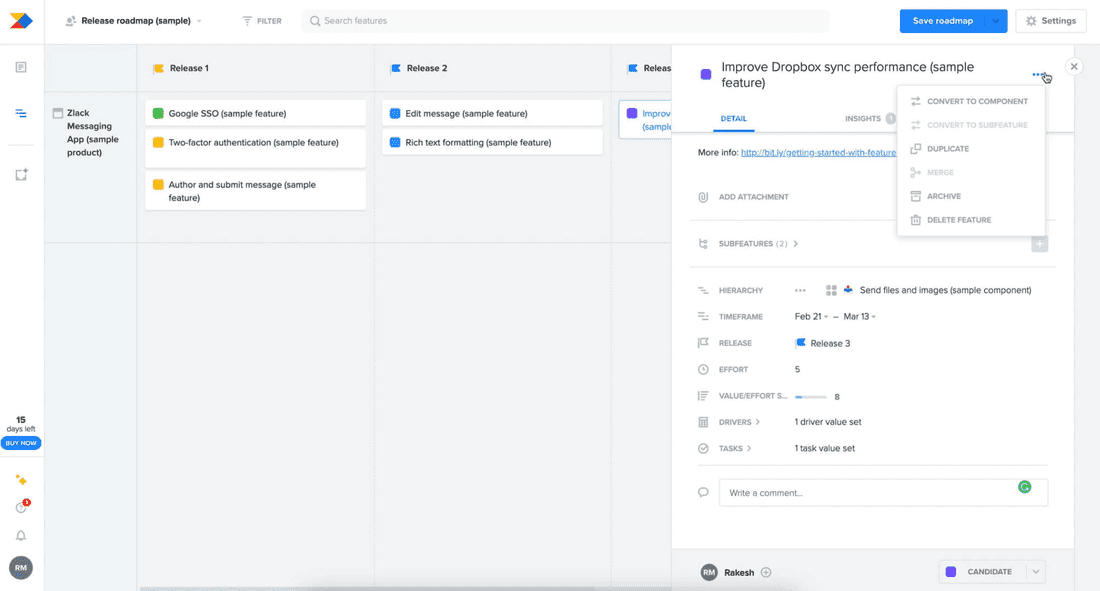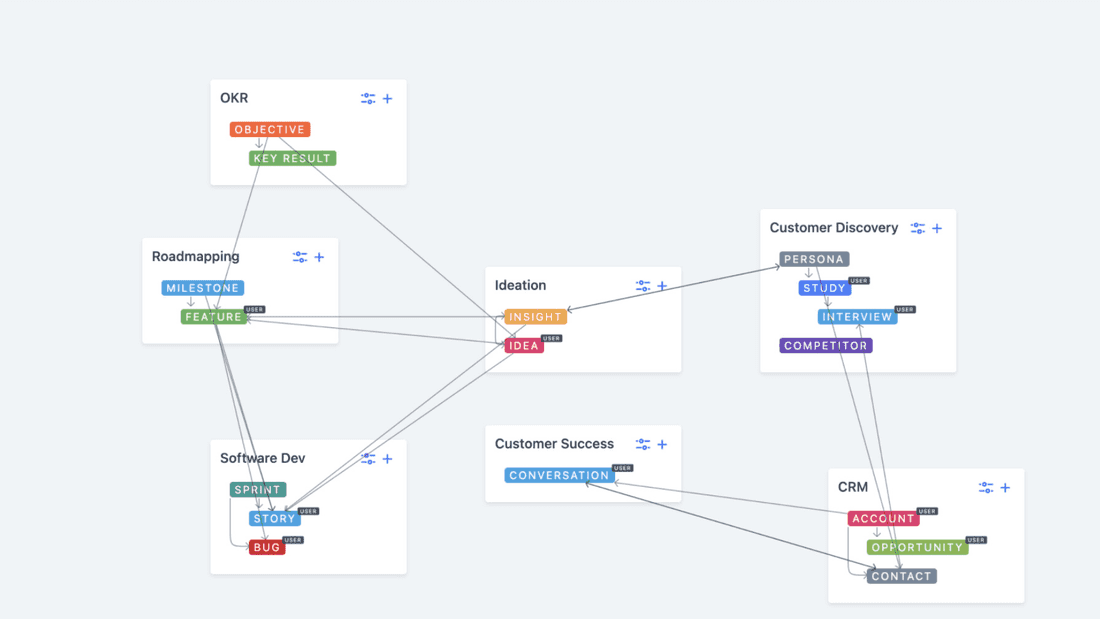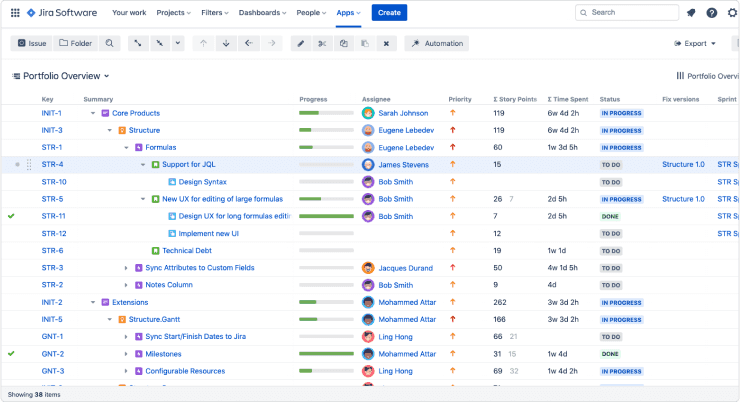The Best Tools for Product Management
Product management is a multifaceted discipline that requires a blend of technical, interpersonal, and strategic skills. As a product manager, you are the driving force behind a product’s development, from conception to the final product. This role involves juggling multiple tasks, including market research, product development, and marketing strategy. To excel in this role, it is vital to have the right product manager tools at your disposal.
How to pick the right tool for product management?
The best tool for product management is one that effectively combines functionalities for the three major areas of product management: strategy, execution, and analysis.
- Strategy: This involves setting a vision for the product and defining the roadmap to achieve the vision. It requires tools that help in market research, competitive analysis, and strategy formulation.
- Execution: This is where the rubber meets the road. Execution involves the actual development of the product, and it requires tools for project management, collaboration, and communication.
- Analysis: This involves tracking the performance of the product, analyzing feedback, and making necessary adjustments. Tools for data analysis, customer feedback, and performance tracking are crucial in this area.
Let’s delve into each of these areas and the tools that are indispensable for a product manager.
Strategy tools
The first step in product management is to define the product strategy. This involves understanding the market, the competition, and the customer needs. Tools like Aha! and Productboard are excellent for this purpose.
Best for roadmapping: Aha!
Aha! is a cloud-based tool that helps product managers set strategy, prioritize features, and share visual roadmaps. It allows for easy collaboration and provides a clear vision of the product’s direction.

Pros
- Roadmapping royalty: Aha! shines as a strategic tool that offers robust features for roadmapping, allowing PMs to plot out long-term strategies and visualize how features align with business objectives.
- Idea management: It has a comprehensive system for gathering and prioritizing ideas, making it easier to make decisions based on user feedback and strategic alignment.
Cons
- Complexity overkill: Its extensive feature set can be overkill for smaller teams or projects, making it a bit like using a chainsaw to cut a birthday cake.
- Pricing pain: Aha! can be pricey, especially for startups or smaller teams who might feel like they’re funding a moon landing.
Best for product operations: Productboard
Productboard, on the other hand, helps product managers understand what users need, prioritize what to build, and rally everyone around the roadmap. It provides a platform for collecting and organizing feedback from multiple sources, making it easier to make informed decisions.

Pros
- User-centric design: Tailored for user feedback integration, helping PMs keep the customer front and center in product decisions.
- Visual delight: Excellent UI/UX that’s easy on the eyes and makes data manageable, not migraine-inducing.
Cons
- Limited customization: While sleek, it can be a bit rigid in terms of workflow customization, which can annoy PMs who love a personalized touch.
- Integration woes: It can play hard-to-get with other tools, leading to integration headaches.
Best for product management: Fibery
Fibery is a no-code platform that lets you build your process from scratch. Your hands aren’t tied and you don’t have to follow the developer’s logic: Fibery gives you full freedom (and awesome human and AI assistance).

Pros
- Made for PMs: Takes care of prioritization, backlog management, feedback management, roadmapping, and basically anything that a PM can dream of, all in interconnected databases.
- Adaptable structure: Highly customizable, allowing teams to tailor it to fit complex and unique workflows.
Cons
- Steep learning curve: With great power comes great responsibility… and a chunky manual. New users may need a GPS (or human help) to navigate its features.
- Emerging Player: Being relatively new, it lacks the robust third-party integrations and large community support that other mature platforms boast.
Execution tools
Once the strategy is set, the next step is execution. This involves managing tasks, coordinating with different teams, and ensuring that product development is on track. Tools like Jira and Slack are indispensable for this stage.
Best for task and bug management: JIRA
Jira is a project management tool designed for Agile teams. It allows product managers to create, assign, and track tasks, ensuring that everyone is on the same page and that product development is progressing as planned.

Pros
- Bug tracking beast: The go-to tool for issue tracking and agile project management, turning bug tracking into less of a bugbear.
- Scalability: It scales from startup to enterprise without breaking a sweat, unlike your servers on launch day.
Cons
- User unfriendliness: Its UI can be as welcoming as a hedge maze, especially for non-technical folks.
- Performance issues: Can be slow and cumbersome with large volumes of data, like trying to run a marathon in mud.
Best for communication: Slack
Slack, on the other hand, is a communication tool that helps teams stay connected. It allows for real-time messaging, file sharing, and integration with other tools, making it easier for teams to collaborate and stay updated on the project’s progress.

Pros
- Communication king: Streamlines communication, reducing email clutter to an echo from a bygone era.
- Integration-friendly: Plays well with numerous other tools, keeping everything connected without a dozen browser tabs.
Cons
- Distraction central: The endless channels and notifications can turn productivity into procrastination.
- Overdependence: Can become the only line of communication, which might backfire during outages or when managing external stakeholders.
Analysis tools
The final area of product management is analysis. This involves tracking the product’s performance, analyzing user feedback, and making necessary adjustments. Tools like Google Analytics and Uservoice are crucial for this purpose.
Best for analytics: Google Analytics
Google Analytics is a powerful tool that provides insights into how users are interacting with your product. It tracks user behavior, traffic sources, and conversion rates, providing valuable data that can help you optimize your product.

Pros
- Data-driven decisions: Provides comprehensive insights into user behavior and website performance, essentially turning data into your crystal ball.
- Cost-effective: Has a powerful free version, which is like getting a Ferrari on a Fiat budget.
Cons
- Complexity for newbies: Can feel like piloting a spaceship for those new to analytics.
- Privacy concerns: With increasing scrutiny on data privacy, relying heavily on Google Analytics can be a bit like keeping all your eggs in a potentially controversial basket.
Best for feedback analytics: UserVoice
UserVoice, on the other hand, is a tool that helps you collect and analyze user feedback. It allows users to submit ideas, vote on existing ones, and provide feedback, giving you a clear understanding of what your users want and need.

Pros
- Feedback focused: Excellently streamlines user feedback collection and management, making it less of a wild goose chase.
- Prioritization helper: Helps prioritize product features based on actual user needs, which can prevent the common product misstep of building something nobody asked for.
Cons
- Niche overreach: Mainly beneficial for feedback management and might require additional tools for full-spectrum product management.
- Cost considerations: Might be considered costly for what it offers, especially if you’re just flirting with feedback collection.
Wrapping up loose ends
The best tool for product management is one that combines functionalities for strategy, execution, and analysis. However, no single tool can cater to all the needs of a product manager. Therefore, it is important to have a suite of tools that can help you in each of these areas. Aha!, Productboard, or Fibery for strategy, Jira and Slack for execution, and Google Analytics and UserVoice for analysis, can make a powerful toolkit for any product manager.
With these tools, you can effectively manage your product from conception to launch, ensuring its success in the market.
Psst... Wanna try Fibery? 👀
Infinitely flexible product discovery & development platform.